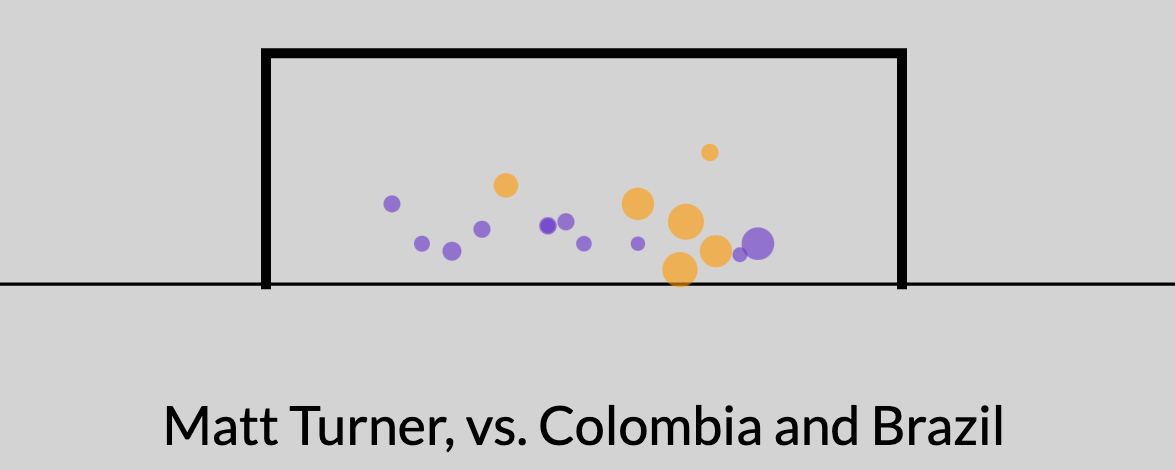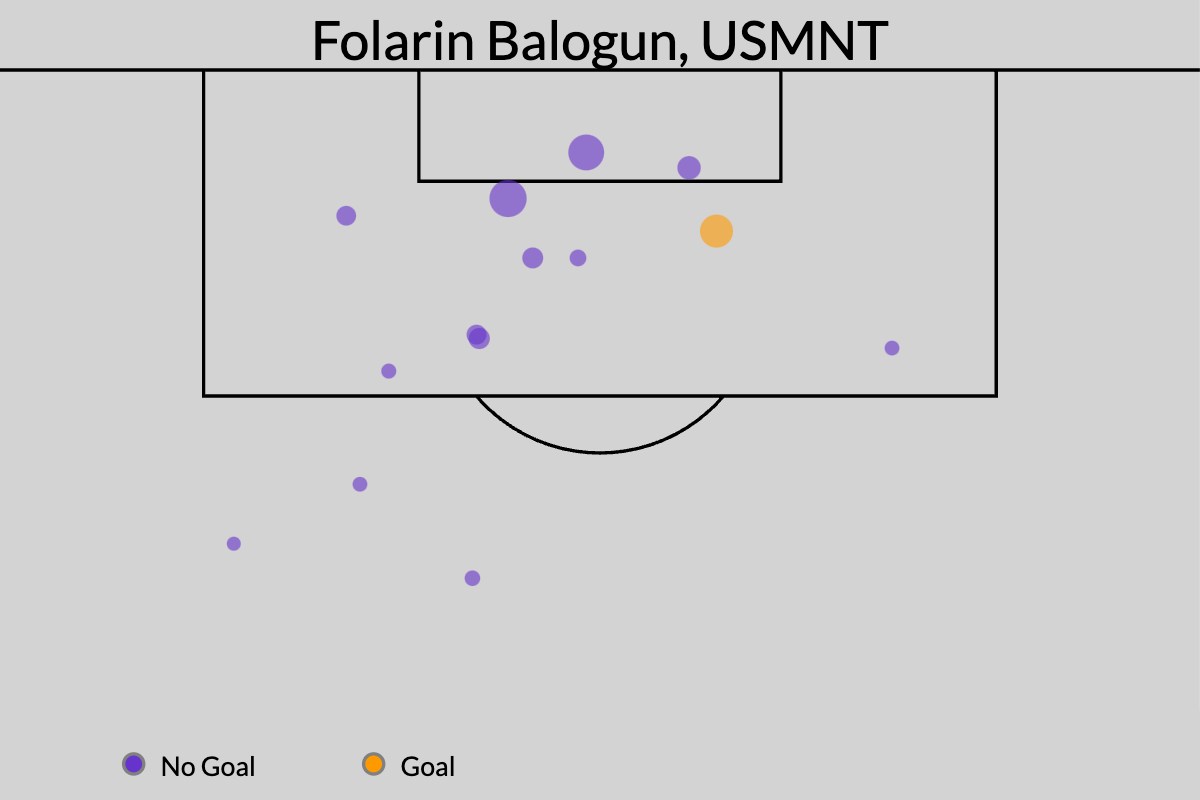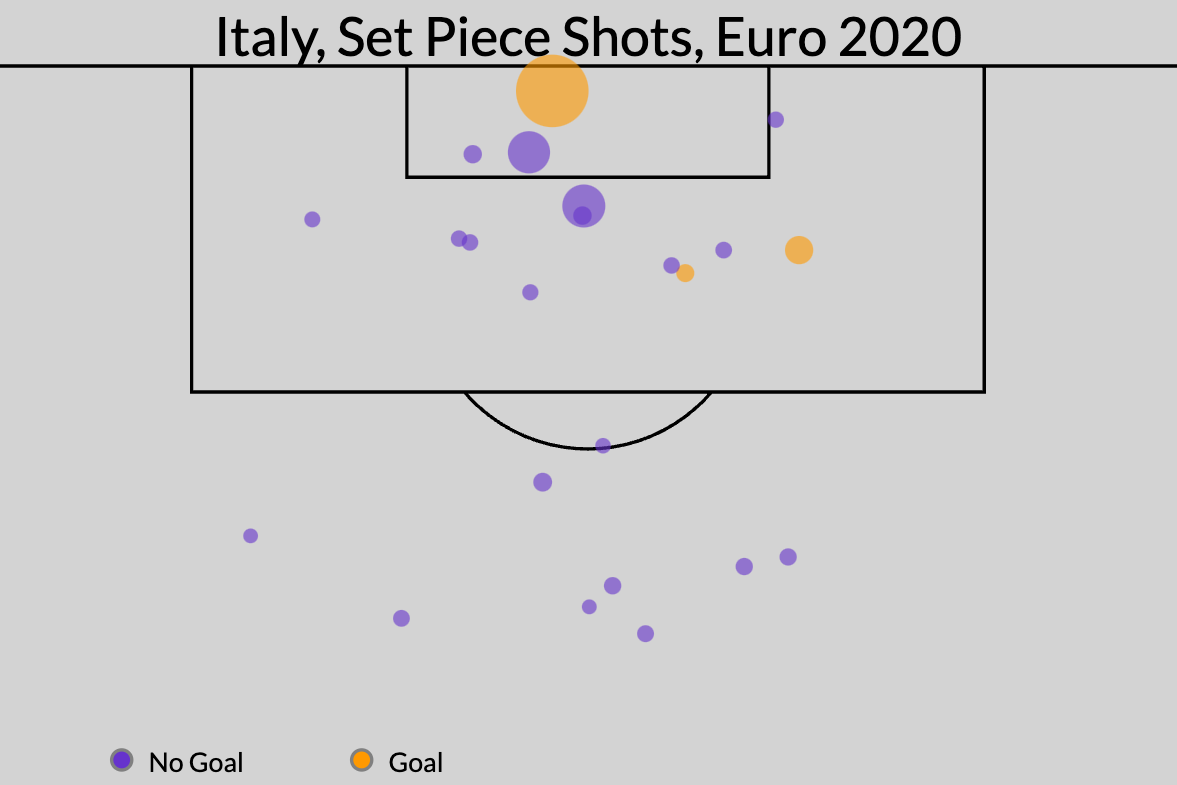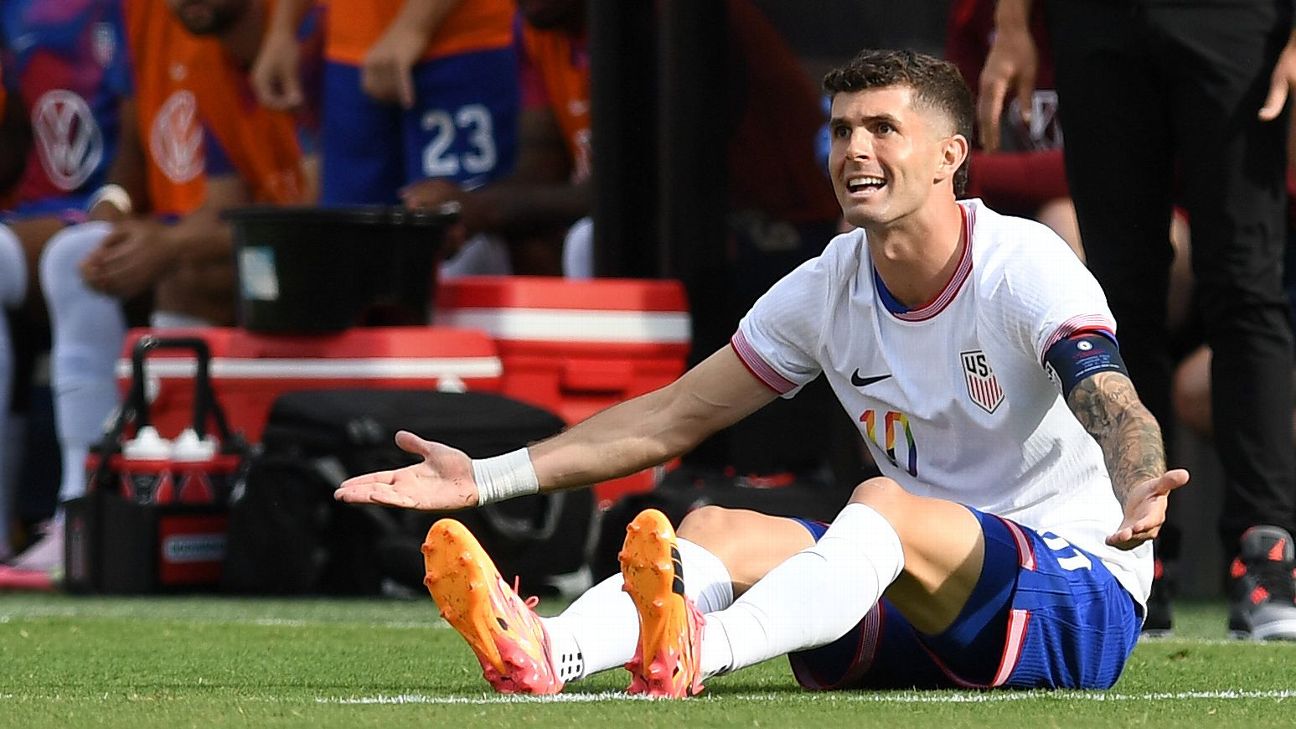We’re finally here: The U.S. men’s national team will play its first real competitive matches since the loss to the Netherlands in the round of 16 of the 2022 World Cup — and it’s the USMNT’s last real competitive matches before the group stages of the 2026 World Cup.
The Copa América matters in multiple ways for manager Gregg Berhalter’s side. It’s a tournament to try to win. Duh. The Euros and Copa América are the two most prestigious international competitions outside of the World Cup. At a certain point, the only real point of having a national team is to compete in these tournaments.
But because the Americans are hosting and therefore automatically qualified for the next World Cup, this is also the last real barometer check for the program before 2026. Sure, there’s the Concacaf Nations League, but the USMNT already dominates that tournament and has established itself, once again, as the premier team in North America.
This tournament, though, will be the last time the U.S. team gets to play competitive matches against some of the best teams in the world. In a strange way, then, this sort of feels like the most important tournament of the Berhalter era — for its immediate and its future stakes.
So, ahead of the USMNT’s opener on Sunday against Bolívia, let’s take a look at the five biggest questions facing the USMNT ahead of the Copa América and project ahead to what it means for the USMNT’s chances in the tournament.
1. Does the Colombia result matter?
The USMNT got destroyed 5-1 by Colombia last week. It was the worst loss under Berhalter and the first time the Americans had conceded five goals at home since the 2009 Gold Cup final against Mexico, a match that featured an American B-team against a mostly-first-choice El Tri side.
Colombia didn’t qualify for the last World Cup, and they’re pretty much the prototypical team — just outside the top tier of traditional European powers along with Brazil and Argentina — that the USMNT is supposed to be as good as these days.
Based on recent evidence, the USMNT is nowhere near as good as Colombia these days:

Of course, there is one neon, gleaming asterisk on this match: It was a friendly. We shouldn’t just write it off as nothing — a 5-1 loss is certainly something — but weird things can happen in a game when both sides are only kinda sorta maybe trying to win. Christian Pulisic played only 45 minutes; both teams made six substitutions; and it’s really just impossible to know how hard any of the players were actually playing.
So, what should we take from it?
Jesse Davis and Pierre Robberechts are researchers with the sports analytics group at KU Leuven, Belgium’s oldest university. Every couple of years, they try to predict the outcome of international tournaments such as the Euros and the World Cup. One of the biggest issues with predicting international soccer is that the teams simply don’t play that many games, and then a good portion of those games are uncompetitive in one of two ways: They’re exhibition games or they’re against a vastly inferior opponent.
What they’ve found is that certain games are more predictive of team strength. The highest tier: World Cup, Euros, Copa América and Africa Cup of Nations. Second tier: Nations League finals, Asian Cup, Oceania Cup. Third tier: qualifiers for any of the above events. Fourth tier: obscure regional cups within continents. And then, all the way at the bottom: friendlies.
So, their model puts very little weight on the result of friendlies — but it still puts some weight on friendlies. And the model also accounts for the scoreline, so a blowout loss is going to affect your rating more than a one-goal defeat.
“To look at the effect of the friendly, we have rerun the simulation where the U.S. beat Colombia 1-0 and where the match was a 1-1 draw,” Davis told me. “The U.S.’s probability to win the Copa América would have increased by 2.4 percentage points if they would have won and 1.1 percentage points if they would have drawn.”
To clarify what this means: It’s not actually the win itself that matters. Rather, it’s what winning suggests about the overall strength of your team.
2. Which Matt Turner will show up in goal?
Based on the ratings from Davis & Co. — and similarly, from what my basic pre-tournament rankings suggested — there are four teams in the tournament that are clearly stronger than the USMNT: Argentina, Brazil, Uruguay and Colombia.
And unfortunately, three of those teams are on the same side of the bracket as the Americans. If the U.S. is going to win the tournament, it’ll likely have to play all four of the bigger favorites. To reach the semifinals? Three. And if it gets out of the group: at least two.
Although the USMNT could feasibly outplay any of those teams — “worse” teams create better chances all the time — it isn’t going to outplay all of them. Plus, the various midfield alignments Berhalter has played in the pre-tournament friendlies don’t suggest that the U.S. will be able to exert much control over these matches.
Given all of that, starting U.S. goalkeeper Matt Turner will have to make some saves. Comparing the post-shot expected-goal count of the shots he has faced with the number of goals he has allowed, we can look at how Turner has performed as a shot-stopper across his career:
New England Revolution: 31.62 goals prevented in 112 matches
USMNT: 9.28 goals prevented in 41 matches
Arsenal: 1.73 goals prevented in 10 matches
Pretty good — until you get to his most recent season: minus-3.68 goals prevented in 21 games for Nottingham Forest. Orange is the goals, and the size of the circle represents the xG, or expected goals, value of the attempt:

Although he saved an absurd 11 shots in the 1-1 draw with Brazil in the USMNT’s final pre-tournament friendly, his overall performance in the two games was quite poor: six goals conceded from 3.33 post-shot xG.

If the U.S. swapped Copa América groups with Mexico, the Americans would be favored in every match they played until they (likely) met Argentina in the semifinal. In that situation, the Americans might be able to survive some below-average shot-stopping.
But, with the luck of the USMNT’s draw, the team will now likely be the underdog in every game it plays after the first two matches against Bolívia and Panama. The U.S. won’t be able to afford a goalkeeper who’s letting in more goals than he should.
3. Will the depth finally make a difference?
My broad theory for why the U.S. didn’t make a deeper run at the World Cup is the same as that of most USMNT fans: Their terrible coach didn’t play the right players or even call up the right players.
Kidding!
My theory is actually the same as it is for most teams: lack of talent. At the World Cup, it felt as if the U.S. had nine players who were good enough to contribute to a deep run at an international tournament. You had Christian Pulisic and Timothy Weah on the wings. Then there was the midfield of Weston McKennie, Tyler Adams and Yunus Musah, the fullbacks in Antonee Robinson and Sergiño Dest, Tim Ream at center back, and Matt Turner in goal.
The starting striker and second center-back positions rotated as the tournament went on, and the team’s performance level seemed to drop off whenever a substitute was made to the starting XI. Thanks to the lack of depth, too, a number of the starters seemed totally cooked by the second half of the Netherlands game.
Less than two full years later, this shouldn’t be as big of a problem.
Dest is out with an injury and, well, see the above for the concerns about Turner. But now the team also has Chris Richards, a starting defender for Crystal Palace, one of the hottest teams in the Premier League. Johnny Cardoso moved to Real Betis in January and immediately became a full-time starter at the base of their midfield. Gio Reyna seems fit, and his parents are not currently feuding with the coach, as far as we know.
Malik Tillman was truly fantastic for PSV Eindhoven, who just put together an all-time-great season in the Netherlands. Ricardo Pepi was an effective super-sub for PSV. Folarin Balogun moved to Monaco for €30 million last summer. And although he was on the World Cup roster, Haji Wright seems to have improved since then — he was one of the best players in the English Championship for Coventry this past season.
Joe Scally has struggled in limited right back minutes so far, but he has had to mark Liverpool’s Luis Díaz and Real Madrid’s Vinícius Júnior in consecutive matches. At the very least, it’s progress from 2022 that Dest’s replacement is a starter for Borussia Monchengladbach in the Bundesliga.
Outside of Turner, it’s not worth focusing on any other individual starters, and that’s because it’s clear we already know what we’re going to get from all of the guys who played in the 2022 World Cup.
Ream has declined a bit from 2022, but he’ll still be the one who moves the ball out of the back. Robinson will do pretty much everything down the left. There’s a question mark over Adams’ health — the World Cup was pretty much the only time there wasn’t a question mark over Adams’ health — but he, McKennie and Musah are known quantities when they wear the red, white and blue. Pulisic will try to single-handedly drag the team as far as he can. And Weah will try to capitalize on the space Pulisic creates for him.
Where the variance comes in is from everyone else: Can Scally add defensive solidity to make up for his on-ball deficiencies in comparison to Dest? Will Richards and Ream be a physical enough pairing in the center of defense? Could Cardoso provide more calm and control to the transition-happy midfield?
Does it matter that Reyna hasn’t played consistent club soccer in four years? Is there a role on this team for a tweener midfielder-slash-attacker like Tillman? Could Wright provide substantial wing depth behind the starters? Can Pepi make an impact in limited minutes against a top team?
And then there’s Balogun, who it’s hard to believe won’t eventually come good for the U.S. men. He has averaged 0.75 and 0.64 expected goals plus expected assists per 90 minutes in each of the past two seasons in Ligue 1. That’s great production for any player, let alone one who won’t be 23 until midway through this tournament. Outside of Pulisic, the USMNT has never had an attacker who was this effective at this young of an age in the history of the program.
In limited minutes with the U.S., though, Balogun hasn’t performed to the same level: just 0.47 xG+xA per 90, across about 600 competitive minutes. And most of the decline comes from his own shots. He has one goal from 1.7 xG:

A hot striker is one of international soccer’s cheat codes. A goal or two out of nowhere can override all of the other aspects of teamwide performance. Can Berhalter and Balogun figure out a way to finally get things going?
4. Set pieces, anyone?
The other cheat code for international soccer: set pieces. Teams simply don’t have enough time to train advanced, cohesive tactics like club sides do. Perhaps this makes some national team coaches think they have to devote all of their limited training time to open-play performance.
However, we have a half-decade of evidence that shows you can score more goals from set pieces while devoting only a limited amount of practice to preplanned dead-ball routines.
The two finalists at Euro 2020 were the tournament’s two leaders in set-piece goals: England and Italy, at three apiece. Italy, in particular, scored a couple of crucial set-piece goals: the opener in the quarterfinal match against Belgium and the equalizer in the final against England.

Those Euro-winning set pieces were mostly designed by Gianni Vio, the former banker who became one of Europe’s first set-piece coaches. His UEFA thesis was titled, “Set pieces: the 15-goal striker,” a reference to the idea that well-run set pieces can add a center forward’s worth of goals to your team’s output. Vio, famously, has a database of thousands of preplanned routines that he designed.
And you’ll see some of them this summer because Vio was recently hired to be the USMNT’s set-piece coach. At the World Cup, the team didn’t score from a single dead-ball situation. If the Americans are going to make a run this summer, that’s going to have to change.
5. Will there be any home-field advantage?
OK, I lied. There’s a third cheat code in international soccer, and well, just all of soccer. That’s playing at home.
The average Premier League team scores 1.6 goals at home and 1.2 on the road. And so, the difference between playing at home or on the road is worth about 0.8 goals of goal difference. That’s essentially the equivalent of having peak Lionel Messi on your team and not having peak Lionel Messi on your team.
We can all agree that the USMNT would be a lot better if peak Lionel Messi played for the USMNT, and he might be this summer.
Since the tournament is being played in the United States, Davis and Robberechts gave the Americans a home-field-advantage boost in their model. As such, they’re third favorites to win the Copa América (14%), after Argentina (38%) and Brazil (25%).
“We have run this simulation giving the U.S. a home advantage, which may or may not be appropriate in some cases,” Davis said.
It is, of course, as simple as boosting predicted USMNT performance by nearly a goal per game. Home-field advantage consists of some combination of referee bias, player comfort (being close to home, not having to travel), and suboptimal tactics (away teams play less aggressively than they should). With empty stadiums during COVID-19, home-field advantage all but disappeared in Europe, suggesting that the presence of fans is the driving factor in the home-field-advantage effect.
The problem for the U.S. is that it might not have the majority of the fans in the stadium for any of its games beyond the first two. Plus, the U.S. will be traveling as much as any other team — almost all of the American players actually live in Europe these days, and it also seems highly unlikely that other countries will play conservatively just because they’re technically playing the U.S. on the road.
But hey, the last time the Copa América was in the United States, a much worse version of the USMNT made a run to the semifinals under Jurgen Klinsmann. That same group would then spectacularly fail to qualify for the World Cup two years later. Can you come up with a better explanation for that than home-field advantage?



